The subtleties of choosing paint for interior work

Paints are one of the versatile materials used both for protecting products and for decorating surfaces. The modern market offers many varieties of such products. Particular attention should be paid to compositions for interior work. They differ in practicality and physical parameters of the protective layer. These factors are important to consider when choosing this type of paint.

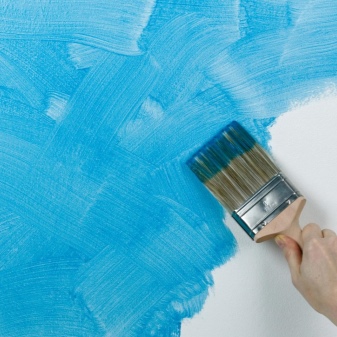
Peculiarities
Paints are special solutions that have a uniform consistency. Conventionally, these products can be divided into two groups: facade mortars and mixtures for interior work. There are also universal formulations that are suitable for all operating conditions.
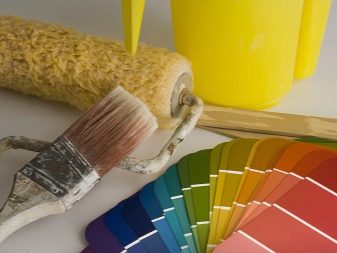

Indoor paints are fundamentally different from each other. They have different properties:
- Resistant to moisture. After drying, a strong film forms on the surface, which does not allow water to pass through. This type of paint is suitable for use in a bathroom or kitchen.
- Strength. This parameter is important for apartments with a large number of residents. The material must resist abrasion well and retain its original properties throughout the entire period of operation. But not all interior paints have similar properties. This is important to consider when choosing a product.
- Environmental friendliness... This factor is present to some extent for each type of solution. Materials for indoor use, after drying, do not emit any harmful substances into the air, thus not affecting human health.

This type of solution is unique and practical. The variety of shades allows you to choose paint for almost any room. The market offers modifications for both domestic conditions and industrial facilities, where there are special requirements for resistance and durability.



Types and characteristics
Interior paint is a general term that brings together almost all types of mixtures found on the market in this group. Depending on the structure and composition, these solutions can be divided into several large types.
Emulsion paints
The main component of such mixtures is water, which often acts as a solvent. Among the advantages of such products are environmental friendliness and fire safety (non-flammable paints). The solutions contain only natural ingredients that do not affect the environment and humans in any way. Another plus is the absence of an unpleasant odor that accompanies other types of mixtures.
To obtain a strong and durable layer, it is advisable to prime the surface for painting with special liquids.

Depending on the composition, emulsion paints are divided into several more groups:
- water-based and water-dispersed mixtures. These solutions are almost identical in composition. They differ only in resistance to moisture. Water-based paints are much less resistant to humid environments, but they have a wide selection of color shades. The color of many of them can be changed by adding color to the structure of the liquid;
- acrylic... Paints of this type are based on acrylic resin, which is mixed with fine dust of natural or artificial origin. A feature of the mixtures is their high resistance to mechanical stress. The film repels water well, but at the same time does not allow air to pass through, which is important for some materials. The only drawback of acrylic paint is its high price compared to similar products;
- polyvinyl acetate. These products are the cheapest, as the paints are practically unable to withstand water and can be easily washed off with a damp cloth. The advantage of these mixtures can be considered their absolute environmental friendliness and safety. Many manufacturers add various components to the composition in order to improve technical performance;

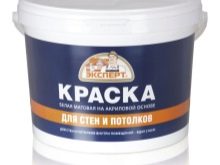
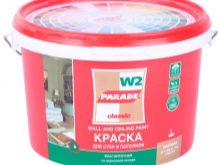
- latex... Latex-based mixes are also very popular today. The solution dries quickly, which allows you to get the desired effect within 60-80 minutes after applying the paint. Latex possesses unique characteristics that lead to the fact that, after drying, the top layer perfectly repels water. In this case, the color of the film does not change even after the expiration of a significant service life.
Washable latex paints are widely used, as they are easily suitable for painting structural wallpaper, decorative plasters, ceramic tiles and protecting plasterboard surfaces (ceilings, walls, partitions, etc.);
- silicone. Mixtures are made on the basis of special mineral components. This allows you to paint with their help almost all types of plasters and other similar materials. The bonding element is silicone resin, which holds the dye well together. Liquid dries for several days, depending on the specific composition and drying conditions. It should be mentioned that the film formed on the surface allows air to pass through very well, but repels water molecules. Therefore, such solutions are versatile, but rarely used due to their high cost.


Alkyd
These paints were made on the basis of alkyds, which, after drying, form a very durable film. The drying time for these solutions reached 2 days, which is not always practical in the modern world. Alkyd mixtures, when dried, emitted harmful volatile substances into the air. You can work with such paints only in protective clothing and respirators. But at the same time, indoors they are quite common, since after drying they become harmless and repel water well.


Enamel
The main component of such a solution is varnish of various kinds. Enamels are versatile, as they can be used both outside and inside the premises. The resulting layer dries quite quickly (it all depends on its thickness) and easily transfers ultraviolet radiation. The paints have an optimal balance of strength and water resistance.


Adhesive
Compositions of this kind are made from water-based organic polymers. The products are marketed as dry mixes. To obtain paint, it must be diluted with water in the proportion indicated by the manufacturer. Among the advantages are a wide range of colors. Materials of this type are of limited use, since the top layer is easily washed off with water, and is also destroyed by carbon dioxide.
Experts recommend using these products only in rooms with low humidity.

Silicate
These are unique solutions, as they are composed of liquid glass. To bind it, alkaline mineral mixtures are added to the structure. After hardening, the top layer is air permeable and is able to withstand significant temperature fluctuations. The only drawback is the minimal moisture resistance. Mixtures are used for painting concrete surfaces in need of decoration.


Polymer cement
Materials of this type have appeared on the market relatively recently. In many ways, the products are similar to silicate mixtures. The main components of polymer-cement paints are white Portland cement, ground lime, lightfast pigments and water dispersion. To bind all these components, synthetic latexes and polyvinyl acetate-based emulsions are added to the composition.
The compositions are used for painting concrete, brick or wood surfaces. Some varieties can also be used to cover reinforced concrete structures. Solutions can be used only at a temperature not lower than +2 degrees.


Polyester
Paints of this type are dry mixtures that are obtained in the process of homogenizing different substances. It is applied to the metal surface using the electrostatic method. They are rarely used for finishing interior domestic premises, since in some cases paint fusion can occur at very high temperatures.


Criterias of choice
The selection of paint for interior work is a rather complicated and responsible procedure. Here you need to take into account many factors, among which several main ones can be distinguished.
Room type
Very often these mixtures are used in the renovation of apartments or private houses. Here we paint both doors, wooden skirting boards and many other coatings. The optimal solution for domestic premises is latex water-based paint. It protects the surface well from corrosion, and also has high gloss and durability. The decoration of the bathroom is carried out only with the help of solutions that can tolerate high air humidity.
In most cases, such products include alkyd compounds, but it is undesirable to use them.
The universal material is enamel, which can be used in any premises. It can be easily applied both over wallpaper and textured walls.


Materials (edit)
Many mixes are versatile as they can cover different surfaces. These products include acrylic, water-dispersion and silicate compounds. They can be used for painting on plaster or brick as well as on wood floors or window frames. If you need to cover the floor parquet, then you should use oil or enamel compounds, which perfectly withstand significant loads. Ecopol is rarely used in construction, it is recommended to use products based on latex or various types of enamels to protect it.
Particular attention should be paid to the use of fiberglass and other similar materials. They are painted only with acrylic, latex or other similar mixtures. It is important that they evenly fill the structure of the material, as well as allow air to pass into the product. Painting of stone or rubber products is possible only with specialized compounds. They can be made on any basis, but the presence of special additives is important here to obtain a strong and durable bond of the film with the base.



Colour
This factor is not fundamental today, since manufacturers present many varieties of paints. But some of them (polymer-cement and others) are produced only in white, which limits the environment for their use. But today, most solutions can be tinted using special dyes. This allows you to achieve the color you want when painting wood or floor tiles.
Please note that in this way you can change not only the color, but also the consistency. It is important here that the paint matches the material and the main design of the room. If this factor is not decisive, then the quality of the product should be considered, and then its appearance.


Properties
Products are manufactured with various additives that can drastically change the physical characteristics of paints. These features are important to consider when choosing.Some types of compounds are electrically conductive, so they should only be used in dry rooms where the risk of electric shock is minimal.
If you still need to protect the metal from rust, it is important to purchase paints that are deeply absorbed into the structure of the material. note that it is impossible to remove these substances with their help. Therefore, the metal must be pre-cleaned.
Paints for wood or concrete can be supplemented with special formulations that minimize the risk of mildew and mildew development.



There are other criteria, among which safety for humans can be distinguished. Water-based formulations are considered the most environmentally friendly, since they not only do not smell, but also consist of natural and non-toxic substances.

Manufacturers: review and reviews
One of the criteria when choosing a paint for indoor use is its brand and manufacturer. In most cases, the well-known models are of high quality, which is noted by consumers who have chosen these paints for use in the repair process. Most often, such popular brands have recently received positive reviews:
- Dali. This type of paint is used to protect metal from corrosion. People especially like the fact that the mixture can be applied even over a small layer of rust. Solutions are used for almost all types of metals, as well as galvanized products.
- Zinga. The materials are intended for painting metals. A strong layer is formed on the surface of the material, which in terms of efficiency can be compared with only galvanizing. This is due to the fact that the solution contains zinc, which forms the main protective film.
- Tikkurila. The products of this company are very popular and need no introduction. The company produces both wood paints and universal alkyd and other products. The compositions of this brand are of high quality, safety and a wide range of colors, which have earned excellent consumer reviews.



- Zobel. A German brand that produces paints for wooden surfaces. Among the positive qualities are unique protective properties, as well as the high resistance of the film to ultraviolet radiation. The mixtures withstand significant temperature changes well.
- "Drevoplast"... The company produces alkyd-based protective enamels. In most cases, solutions are used to coat wood products. The homogeneous consistency of the mixture allows it to be evenly distributed over the entire base. The frozen film resembles liquid plastic in its tactile sensations, but at the same time it allows air to pass through well, which is important for wood.
- Bayramix. Acrylic paints of this company are made on the basis of marble chips. Here you can find both ordinary easily washed off and waterproof varieties of solutions.



- Adler Lignovit Color. Acrylic compounds for wood are produced under this brand. Paints differ in their versatility, as they can be applied inside and outside the house. Among the positive characteristics, users note high elasticity and minimal risk of flaking.
- Sherwin Williams. The company produces so-called rubber paints, which are used to paint concrete floors. The solution is not afraid of biological and chemical irritants, and also belongs to environmentally friendly formulations. The advantage of the paint is the presence of an antistatic effect, as well as high elasticity, which contributes to minimal damage to the top layer.
- Bytkhim... Under this brand you can find special acrylic enamels, which include polyurethane. This mortar is intended for covering concrete floors.
- Teknos, Biofa. Manufacturers specialize in the production of polyurethane concrete floor paints. The advantages of this product are high mechanical strength and chemical resistance.But it is undesirable to use these solutions in everyday life, since when they dry they release many harmful substances.
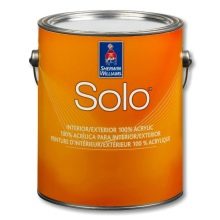


When choosing paint for interior work, first of all, you should focus on its safety and the material for which it is intended.
For information on how to choose paint for walls or ceilings, see the next video.













The comment was sent successfully.